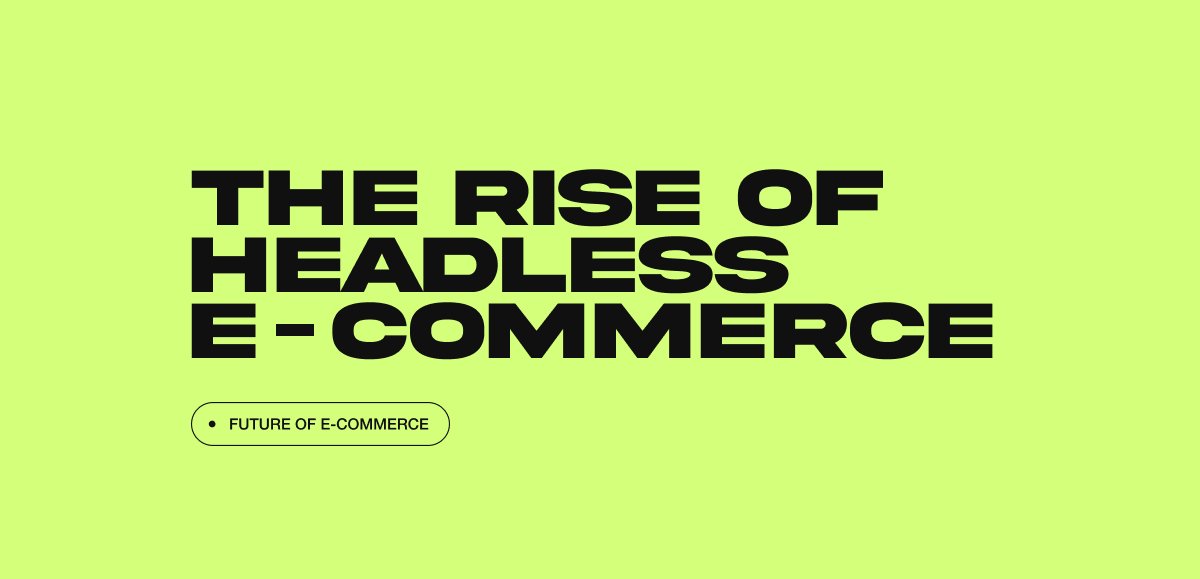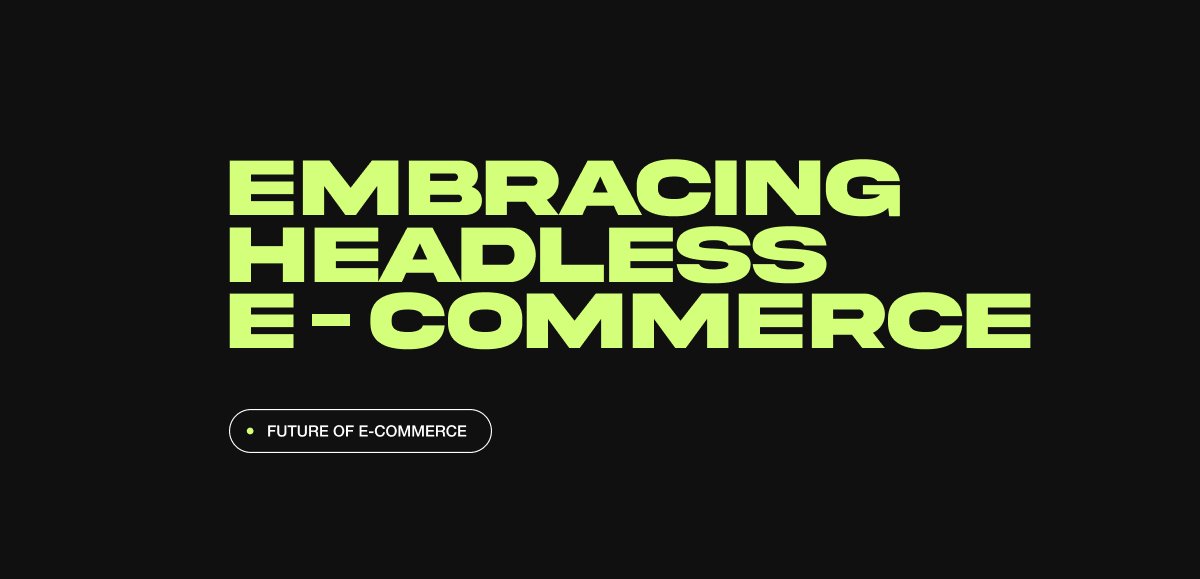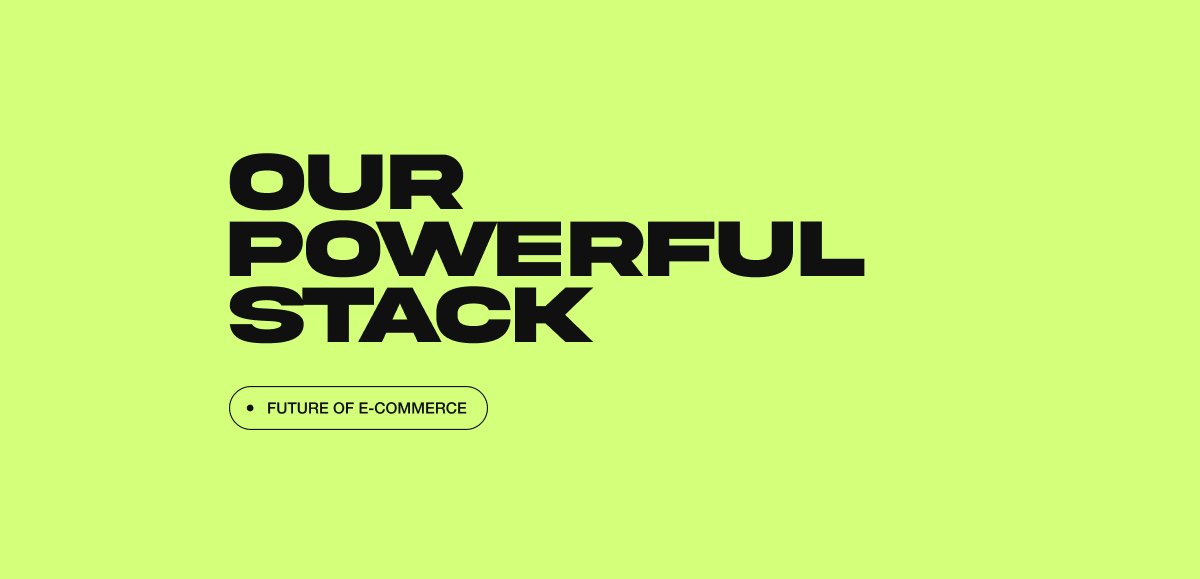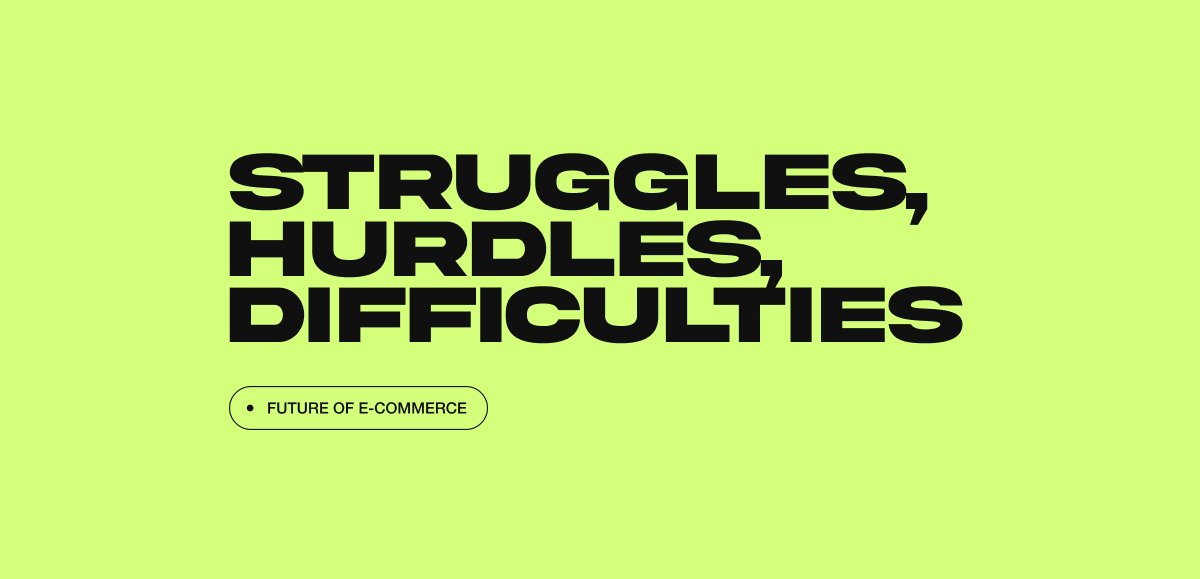
In our quest for the ultimate e-commerce solution, we embarked on a journey to discover the Holy Grail of online retail. A blend of cutting-edge technology and boundless imagination: Headless e-commerce — a paradigm shift designed to separate the frontend from the backend.
The concept of headless e-commerce carries a profound promise: A more agile, more flexible, more personalised, and more everything shopping experience.
So, obviously, we took the leap.
By leveraging Next.js and the power of the Shopify Storefront API, we have crafted an enchanting e-commerce experience that ignites your imagination: CAMERICH.
Join me as I describe my findings in this exciting venture, and explore how this headless approach is shaping the future of e-commerce at OWOW!

Headless e-commerce is a modern approach to building online stores that separates the frontend and backend of the website. And all the cool kids are doing it.
In traditional e-commerce, the frontend and backend are tightly coupled, meaning any changes or updates to the frontend require modifications to the backend as well. With headless e-commerce, the frontend and backend are decoupled, allowing for more flexibility and agility in designing and developing the user interface.
The frontend, which is responsible for the visual presentation and user experience, can be built using any technology stack, such as Next.js. Meanwhile, the backend, which handles the business logic and data management, is powered by Shopify and its Storefront API.

Our journey towards headless e-commerce was sparked by our client. They have a distinct vision — a vision where brand identity and aesthetics were not just details, but the cornerstone of their online presence. They aspired to provide their customers with a high-end e-commerce experience that was immersive, intuitive, and unforgettable.
Traditional e-commerce platforms, with their monolithic architecture, often impose limitations on customisation. They can inhibit a seamless brand expression due to their rigid templates and backend constraints. Our client’s ambition demanded flexibility and innovation beyond the standard offerings.
In recognising this need for a digital experience that could mirror the sophistication of their brand, we were led to headless e-commerce — a modern approach that inherently supports a bespoke user journey. By decoupling the frontend from the backend, we gained the freedom to craft a tailored product that resonates with the brand’s unique ethos, and elevates the shopping experience for customers!
Headless commerce not only liberated us from the constraints of traditional e-commerce platforms but also enabled us to inject the client’s strong aesthetic vision our design team and client landed on, into the user interface. This architectural freedom was the key to translating their brand narrative into a fluid digital experience.

Our headless e-commerce store front is architected within a monorepo setup, along with a brand website and supportive packages (which we won’t discuss in this article). The monorepo brings our suite of applications and libraries together under a single cohesive development umbrella:
- Next.js Storefront and Brand Website: The dual power of Next.js drives our storefront and brand’s narrative site, delivering high performance and fast, server-side rendered experiences with seamless transitions and an SEO edge.
- Radix UI-Powered Design System: Our design system, crafted with Radix UI, provides a versatile component library, ensuring visual consistency and accessibility across all user interface elements.
- Shopify Storefront API & Shopify Hydrogen: Commerce logic and data processing is provided by Shopify’s Storefront API and React Hydrogen component library.
- Styling and Animations: TailwindCSS aids us in applying efficient, responsive styling, while GSAP allows us to add complex animations and micro-interactions.
- Globalisation Support: Next Intl offers internationalisation support. It helps us with anything from text translations to localised page routing and alternate canonical links.

Performance, look & feel
As I look back at the journey of crafting CAMERICH, it’s like watching the pieces of a well-thought-out puzzle come together. There’s a certain magic to the way the site operates now. The performance, for instance, is satisfyingly crisp — pages load with a swift elegance. Content, shop data and images are optimised and cached in the background, which makes it feel effortlessly efficient.
SEO & URLs
Handling the SEO proved to be a worthwhile effort. With the ability to meticulously tweak URLs, metadata, and canonical tags, I’ve felt a reassuring sense of command over how we present our content to the world wide web. It has made the site not just functional, but strategic.
Design & aesthetic, motion & interaction
The site’s design is the result of a thoughtful collaboration that captures the essence of our client’s brand. I find myself particularly fond of the lookbook — it doesn’t just showcase products; it tells a story. The landing page invites interaction, and the product pages don’t merely display items; they offer a visual and detailed experience.
The headless setup gave us the technical possibilities and creative freedom to realise these features. They make the product interesting and engaging, setting it apart from the rest.
Scalable design system
As I briefly mentioned before, the CAMERICH storefront’s code lives in a monorepo environment. We conveniently split our code base into multiple smaller projects. Among these projects, is our design system, in which we built high quality, reusable and customisable React components. This design system is being used for both CAMERICH, and the client’s brand website (still in development, at the time of writing).
Opting for a headless architecture enabled us to craft a dynamic and scalable design system, tailor-made and easily adaptable for each application that utilises it.
Heck, I might even write a separate blog post about our monorepo and design system, in the future!

All that glitters is not gold.
When diving into the world of headless e-commerce with Next.js and Shopify, we encountered some interesting challenges and unexpected discoveries.
As we ventured into the realm of Next.js, we found ourselves embracing the cutting-edge App Router feature. For me, this feature exemplifies the rapid development and constant evolution of Next.js and the React ecosystem. Together, they seem to be in a constant race for innovation while trying to catch up to each other.
This never-ending cascade of new features, while exciting, brings with it a shadow of apprehension. The rapid development sometimes made me feel as though we were constructing a building even as the blueprints morph and shift.
In a way, this tension is a testament to the vibrant ecosystem that surrounds Next.js and React. Though it’s been smooth sailing up until now, the fear of instability is a valid concern.
Besides using Next.js, navigating the extensive world of Shopify APIs was a challenging task. While the APIs are powerful and comprehensive, they required time and dedication to fully grasp their capabilities. To master Shopify’s APIs was as demanding as it was rewarding; their robust quality, remarkable performance, and expansive scale is impressive. But the depth and breadth of knowledge required to harness their full potential, demanded an investment of time and effort that should not be understated.
Finally, embarking on a headless journey meant bidding farewell to the traditional front-end features provided by Shopify. However, the sacrifices were well worth it as we gained unparalleled customisation and the ability to bring our wildest ideas to life. The only tradeoff? The additional effort and development time that went into bringing our client’s visions to life. A commitment that truly warrants recognition. However; we consciously made the decision to go with headless e-commerce, to bring our client’s vision to life. In the end, it was certainly worth our efforts.
Final remarks
In this thrilling adventure of headless e-commerce, we learned valuable lessons and discovered best practices along the way.
Firstly, being adaptable was key. In the fast-paced world of e-commerce, akin to exploring new lands, you’ve got to be ready to pivot and tackle the unexpected. It kept things exciting and us on our toes!
Customisation turned out to be our Swiss army knife. Moving away from the one-size-fits-all approach, we tailored a unique experience that really captured our client’s vision.
Keeping up with Next.js and Shopify was a tad challenging but absolutely worth it. These tools gave us the flexibility and power we needed.
In short, this journey was more than just a technical venture; it was a blend of creativity, learning, and a bit of adventurous spirit. It was about crafting an e-commerce experience that wasn’t just effective but also a delight for both our users and us!
Thank you for reading!
Thanks for checking out my first blog post! I hope you enjoyed this little journey into headless e-commerce. If you’ve got thoughts or questions, don’t hesitate to drop us a line. Stay tuned for more from us at OWOW.
Catch you later, Stef, Lead Dev at OWOW 🚀